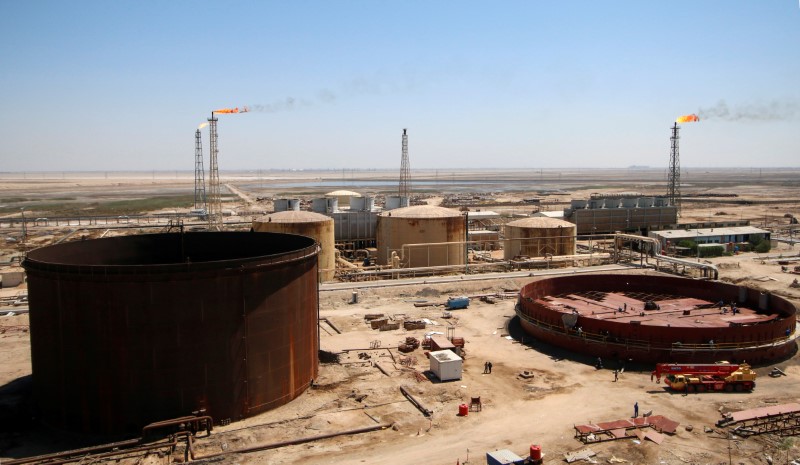By Alex Lawler and Rania El Gamal
LONDON/DUBAI (Reuters) - OPEC oil output fell for a fourth straight month in April, a Reuters survey found on Tuesday, as top exporter Saudi Arabia kept production below its target while maintenance and unrest cut production in exempt nations Nigeria and Libya.
But more oil from Angola and higher UAE output than originally thought helped OPEC compliance with its production-cutting deal slip to 90 percent from a revised 92 percent in March, according to Reuters surveys.
The Organization of the Petroleum Exporting Countries pledged to reduce output by about 1.2 million barrels per day (bpd) for six months from Jan. 1 - the first supply cut deal since 2008. Non-OPEC producers are cutting about half as much.
OPEC wants to get rid of excess supply that is keeping oil (LCOc1) below $52 a barrel, half the level of mid-2014. With the oversupply proving hard to shift, OPEC is expected to prolong the agreement.
Compliance of 90 percent is still higher than OPEC achieved in its last cut in 2009, Reuters surveys show. Analysts including those at the International Energy Agency have put adherence in 2017 even higher, with the IEA calling it a record.
April's biggest production gain came from Angola, which scheduled higher exports and where output started at the East Pole field in February. The increase brought Angolan compliance down to 91 percent, from above 100 earlier in the year.
Other, small increases came from Kuwait and Saudi Arabia, the survey found, although their compliance was the second-highest and highest respectively in OPEC.
Even with April's increase, the total curb achieved by OPEC's top producer Saudi Arabia is 574,000 bpd, well above the target cut of 486,000 bpd.
Iran's production rose slightly. Tehran was allowed a small increase in output under the OPEC agreement.
These increases offset lower supply in Iraq, which exported less crude from its southern terminals - and Venezuela, where exports also fell month-on-month, according to tanker data and shipping sources.
Output in the United Arab Emirates fell, but production in March was higher than originally thought. The UAE, which has been focusing on expanding oil capacity in recent years, has been slower than other Gulf members to trim supply.
The UAE says it is complying 100 percent. It has blamed suggestions that it is failing to do so on discrepancies between its own production figures and those estimated by the secondary sources that OPEC uses to track compliance.
Lower output in Nigeria and Libya, which are exempt from the curbs, helped bring down overall OPEC production.
Maintenance continued at Nigeria's Bonga field for part of the month and loading delays affected the country's biggest export stream, Qua Iboe.
In Libya, output fell as protests blocking a pipeline prompted the shutdown of the Sharara field. Output there resumed in late April, suggesting May could see higher production if no further unrest emerges.
OPEC announced a production target of 32.5 million bpd at its Nov. 30 meeting, which was based on low figures for Libya and Nigeria and included Indonesia, which has since left the group.
The Libyan and Nigerian reductions mean OPEC output in April averaged 31.97 million bpd, about 220,000 bpd above its supply target adjusted to remove Indonesia.

The Reuters survey is based on shipping data provided by external sources, Thomson Reuters flows data, and information provided by sources at oil companies, OPEC and consulting firms.
